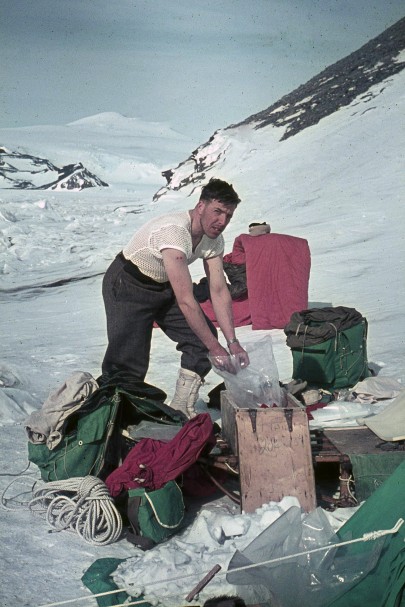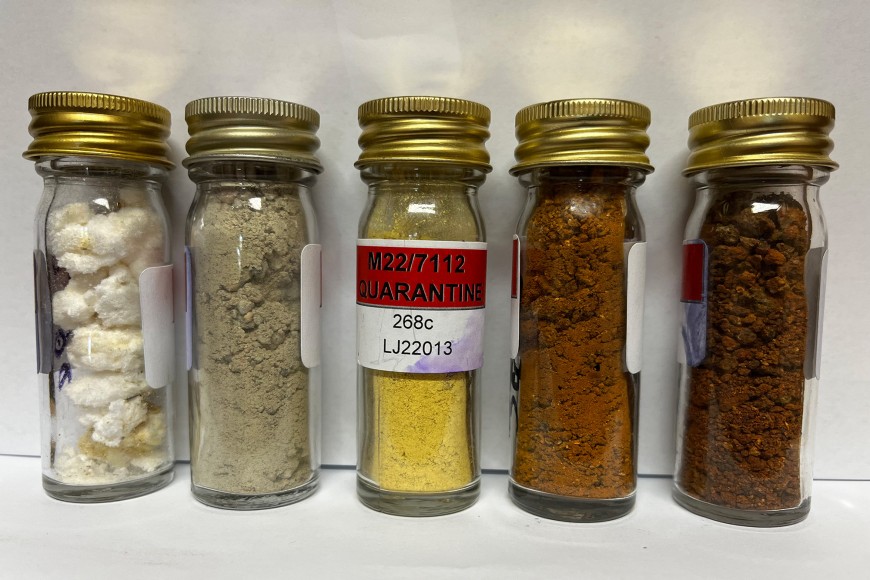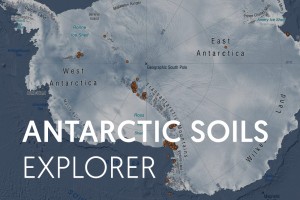
Dr Iain Campbell packing samples at Edisto Inlet during a 1964 expedition to Antarctica.
Dr Ursula Jewell led a team that spent 2 years curating, digitising and cataloguing the world’s most extensive collection of Antarctic soil samples dating back as far as 1957. The data are now publicly available through the Antarctic Soils Explorer website.
“Soil data from polar latitudes are rare,” says Dr Thomas Caspari, the principal pedologist on the project. “Our collection of Antarctic soil samples is truly unique. We now have the best record of Antarctic soils in their most pristine condition, with the earliest collected samples essentially representing pre-human visitation. These samples also predate the arrival of micro-plastics.”
During the project, researchers transferred 8,837 soil samples, topping the scales at more than 1.5 tonnes, to a robust storage container where each sample was weighed, photographed and labelled with a unique identifier. The samples are now fully curated, stored and preserved at the Quarantine Facility of the National Soils Archive at Manaaki Whenua in Palmerston North.
“These are invaluable ‘time capsules’ for assessing temporal changes in soil properties, and their data will form the baseline for all further scientific analysis on Antarctic soils,” says Thomas. The data pertaining to those samples are available for download within the Antarctic Soils Explorer, and include location details and soil physical, chemical and mineralogical properties where available.
The first sample dates to 1957 when Aotaroa New Zealand (AoNZ) scientists who were part of the initial Commonwealth Trans-Antarctic Expedition (TAE) filled a biscuit tin with soil from where new Scott Base huts were under construction. The sample formed part of AoNZ’s contribution to the International Geophysical Year (IGY) in which scientists from around the world took part in coordinated earth science studies.
The bulk of the early samples was collected by pioneering Antarctic soil scientists Drs John McCraw (1925–2014), Graeme Claridge (1932–2021), and Iain Campbell (b. 1935). The locations from which these samples have been gathered can be explored via an interactive map of the Antarctic continent that features original materials and recollections from these early Antarctic excursions.
The Frozen Assets project was made possible through funding support from Te Tahua Taiao Ngā Taonga (Lottery Environment and Heritage) and Manaaki Whenua to ensure AoNZ’s Antarctic soils heritage is professionally protected, managed, and made accessible for future generations.

Curated samples of Antarctic soils at the National Soils Archive.


